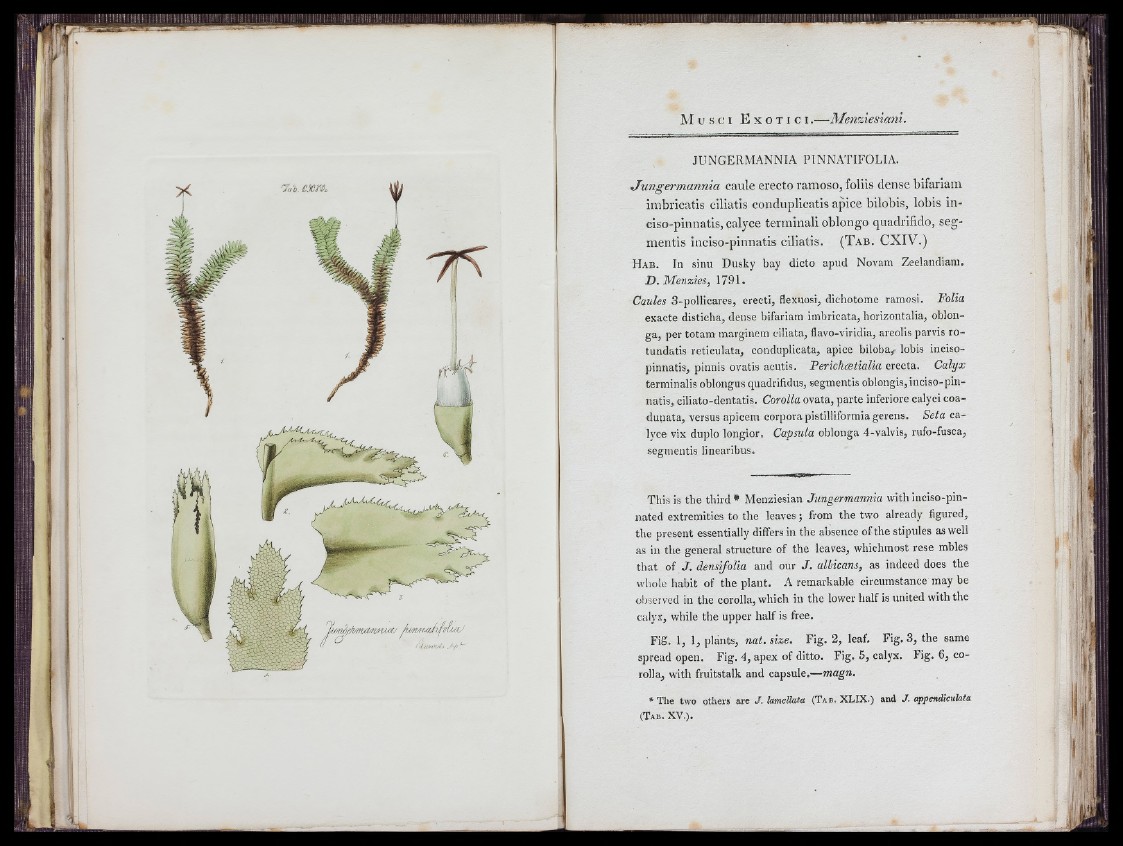
il' ü
H
JUNGERMANNIA PINNATIFOLIA.
Jungermannia caule erecto ramoso, foliis dense bifarlam
imbricatis ciliatis conduplicatis apice bilobis, lobis in-
ciso-pinnatis, calyce terminali oblongo quadrifido, segmentis
inciso-pinnatis ciliatis. (Tab. CXIV.)
Hab. In sinu Dusky bay dicto apud Novam Zeelandiam.
D . Menzies, 1791.
Caules 3-pollieares, erecti, flexuosi, dichotome ramosi. Folia
exacte disticha, dense bifariara imbricata, horizontalia, oblonga,
per totam marginem eiliata, flavo-viridia, areolis parvis rotundatis
reticulata, conduplicata, apice biloba, lobis inciso-
pinnatis, plnnis ovatis acutis. Perichætialia erecta. Calyx
terminalis oblongus quadrifidus, segmentis oblongis, inciso-pinnatis,
ciliato-dentatis. Corolla ovata, parte inferiore calyci coadunata,
versus apicem corpora pistilliformiagerens. Seta ca-
Ivce vix duplo longior. Capsula oblonga 4-valvis, rufo-fusca,
segmentis linearibus.
'pii
ir
This is the third* Menziesian Jiingermannia with inciso-pin-
nated extremities to the leaves; from the two already figured,
the present essentially differs in the absence of the stipules as well
as in the general structure of the leaves, whichinost rese mbles
that of J . densifoUa and our J . albicans, as indeed does the
whole habit of the plant, A remarkable circumstance may be
observed in the corolla, which in the lower half is united with the
calyx, while the upper half is free.
Fig. 1, 1, plants, nat. size. Fig. 2, leaf. Fig. 3, the same
spread open. Fig. 4, apex of ditto. Fig. 5, calyx. Fig. 6, corolla,
with fruitstalk and capsule.—magn.
* The two others are J . lamellata (Tab. XLIX.) and J. appendiculata
(Tab. XV.). UHi.